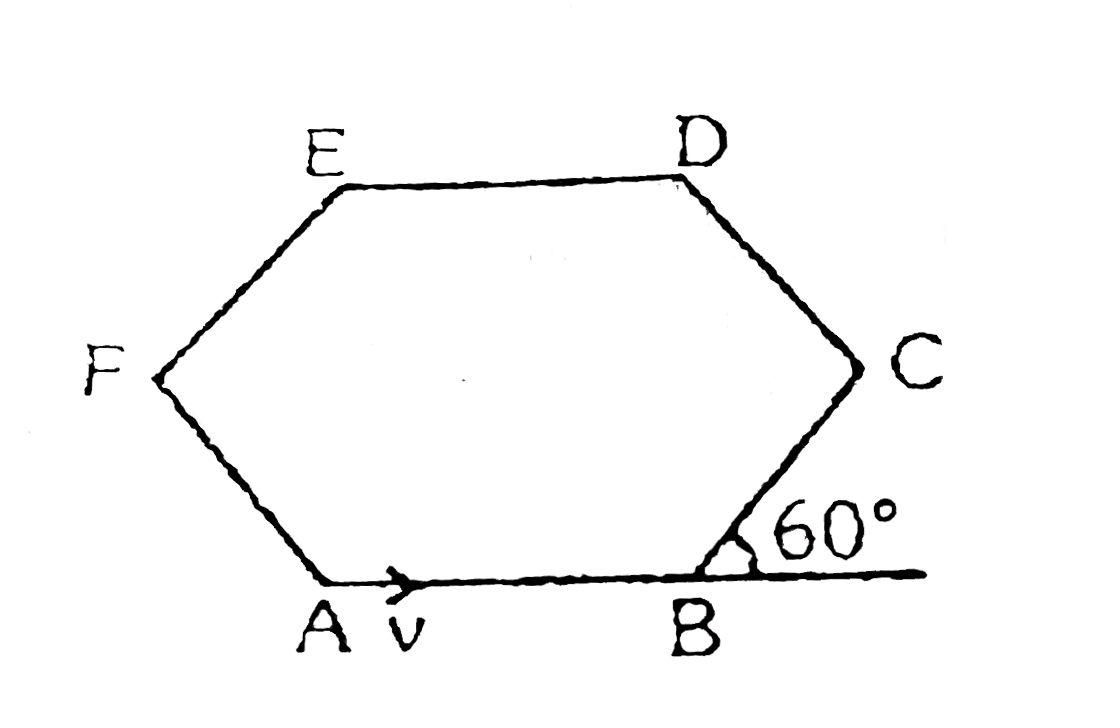The motion of a particle is described by the equation x=a+bt2 where a=15 cm and b=3cm/s. Its instantaneous velocity at time 3 sec will be Solution in Gujrati
The correct Answer is:A, C, D
Av. Velocity =Displacementtime

Topper's Solved these Questions
- MOTION IN A PALNEBOOK - ALLEN CHAPTER - MOTION IN A PALNEEXERCISE - EXERCISE-03
6 Videos
- MOTION IN A PALNEBOOK - ALLEN CHAPTER - MOTION IN A PALNEEXERCISE - Assertion-Reason
20 Videos
- MOTION IN A PALNEBOOK - ALLEN CHAPTER - MOTION IN A PALNEEXERCISE - SOLVED EXAMPLE
28 Videos
- KINEMATICS-2DBOOK - ALLEN CHAPTER - KINEMATICS-2DEXERCISE - Exercise (O-2)
47 Videos
- NEWTON'S LAWS OF MOTION & FRICTIONBOOK - ALLEN CHAPTER - NEWTON'S LAWS OF MOTION & FRICTIONEXERCISE - EXERCISE (JA)
4 Videos
Similar Questions
A point traversed half the distance with a velocity v0. The remaining part of the distance was covered with velocity v1 for half the time, and with velocity v2 for the other half of the time. Find the mean velocity of the point averaged over the whole time of the motion.
View SolutionAn iron ball and a wooden ball of the same radius are released from a height ‘ h ’ in vacuum. The time taken by both of them to reach the ground is
View SolutionA particle thrown over a triangle from one end of a horizontal base falls on the other end of the base after grazing the vertex. If αandβ are the base angles of triangle and angle of projection is θ, then prove that (tanθ=tanα+tanβ)
View SolutionA particle is moving in xy-plane .At certain instant the components of its velocity and acceleration are as follows ux=3m/s,uy=4m/s,ax=2m/s2anday=1m/s2. The rate of change of speed at this moment is
View SolutionA piece of wire is bent in the shape of a parabola y=kx2 (y-axis vertical) with a bead of mass m on it. The bead can slide on the wire without friction. It stays at the lowest point of the parabola when the wire is at rest. The wire is now accelerated parallel to the x-axis with a constant acceleration a. The distance of the new equilibrium position of the bead, where the bead can stay at rest with respect to the wire, from the y-axis is:
View SolutionThe motion of a particle is described by the equation x = a+bt^(2) where a = 15 cm and b = 3 cm//s . Its instantaneous velocity at time 3 sec will be
View SolutionThe motion of a particle is described as S=2−3t+4t3 what is the acceleration of the paricle at the point where its velocity is zero ?
View Solutionएक कण सरल आवर्त गति कर रहा है माध्य स्थिति से 4 सेमि 6 सेमि दूरियों पर कण के वेग क्रमशः 3 सेमी / सेकण्ड तथा 2 सेमी / सेकण्ड है इसका आवर्त काल ज्ञात कीजिये
View Solutionएक कण सरल आवर्त गति कर रहा है । माध्य स्थिति से 4 सेमी व 6 सेमी दूरियों पर कण के वेग क्रमशः 3 सेमी/सेकंड व 2 सेमी/ सेकंड है । इसका आवर्तकाल तथा आयाम ज्ञात कीजिये ।
View SolutionThe amplitude of a particle in SHM is 5 cms and its time period is π. At a displacement of 3 cms from its mean position the velocity in cms/sec will be :
View Solutionएक कण सरल आवर्त गति करता है | यदि साम्यावस्था से 4.0 सेमी व 5.0 सेमी दूरियों पर उसका वेग क्रमश : 10 सेमी/ से व 8 सेमी/से है, तो उसका आवर्तकाल है :
View SolutionDisplacement (x) and time (t) of a particle in motion are related as x = at + bt^(2) -ct^(3) where a,b, and c, are constants. Velocity of the particle when its acceleration becomes zero is
View Solutionकिसी कण की गति का समीकरण x=a+bt2 है, यहाँ a = 15 सेमी तथा b=3m/s2 है। t=3 सैकण्ड पर कण का तात्क्षणिक वेग होगा
View Solutionकिसी कण की चाल के समीकरण को x=a+bt2 के द्वारा बताया गया है, जहाँ a=15 cm एवं b=3cms−2 इसका तात्क्षणिक वेग t=3 s पर होगा
View Solutionकिसी कण की गति का समीकरण x=a+bt2 है। a = 15 cm व b=3cm/s2 है। समय 3 s पर कण का वेग होगा
View SolutionThe motion of a particle is described by the equation x=a+bt2 where a=15 cm and b=3cm/s2. Its instantaneous velocity at time 3 sec will be
View Solution
